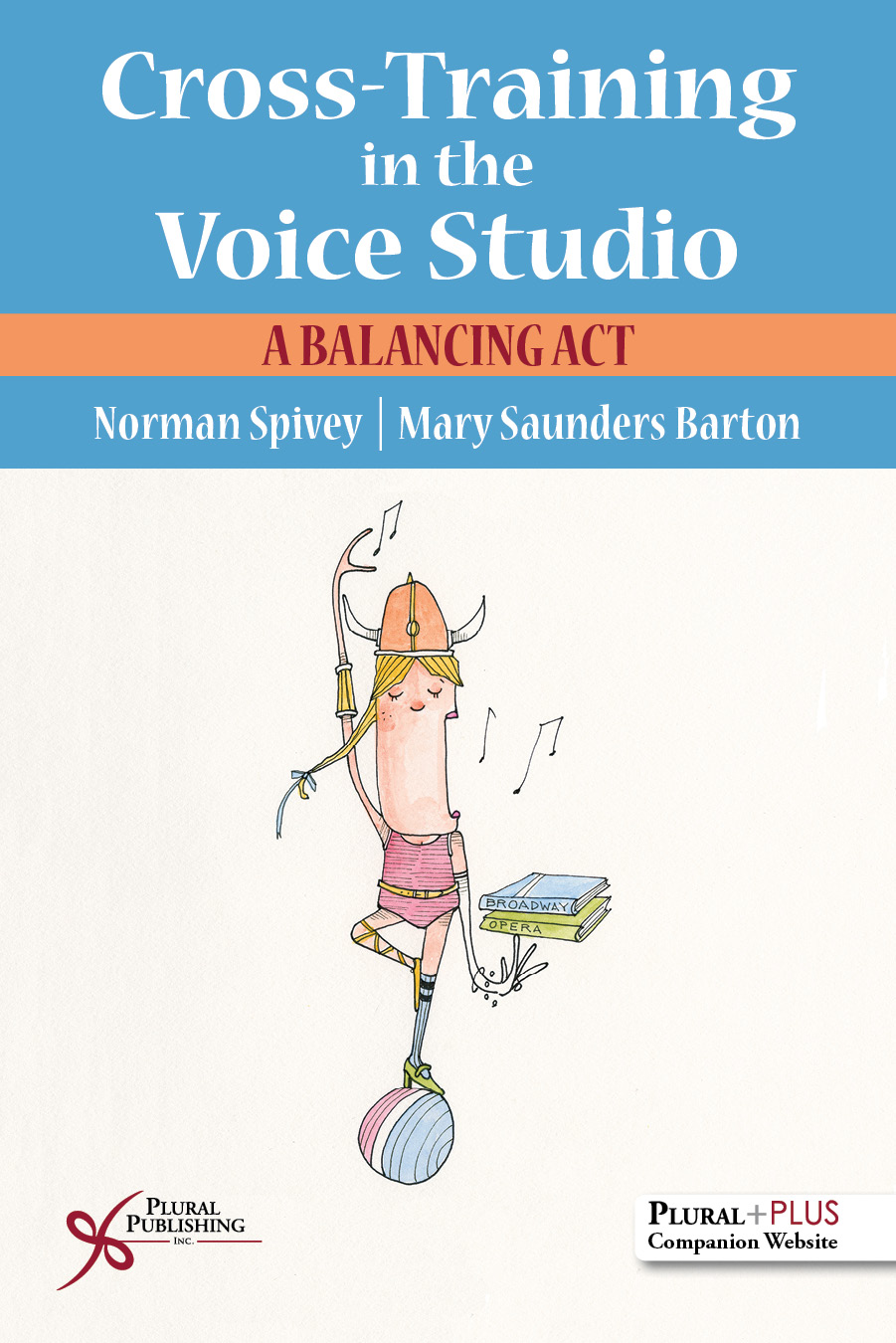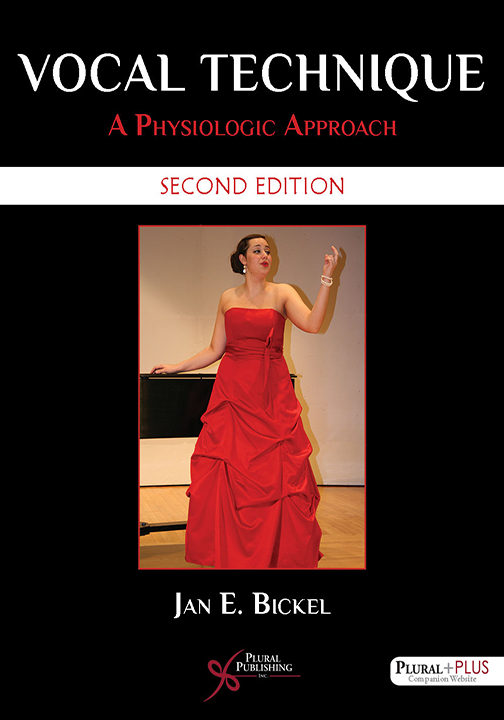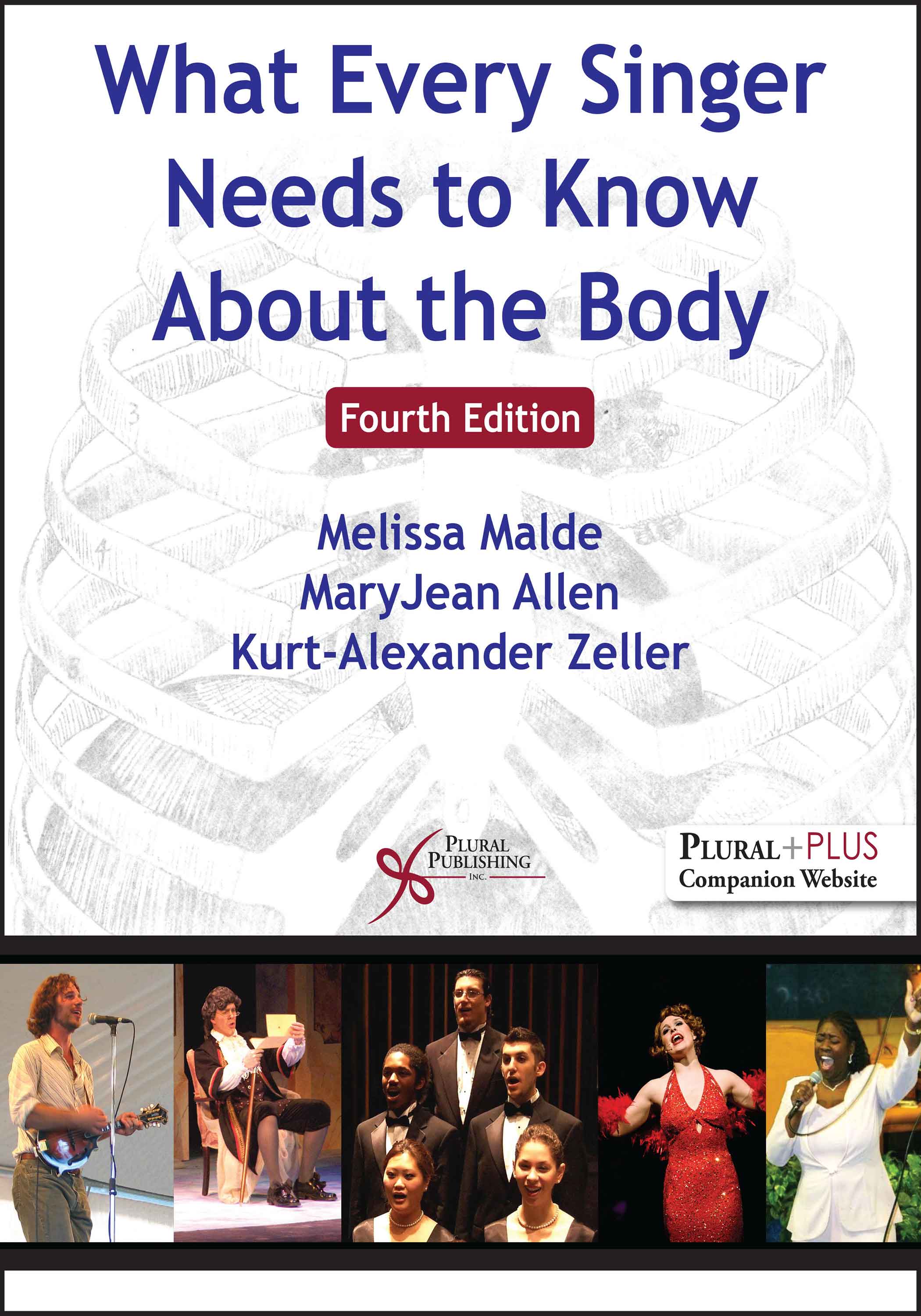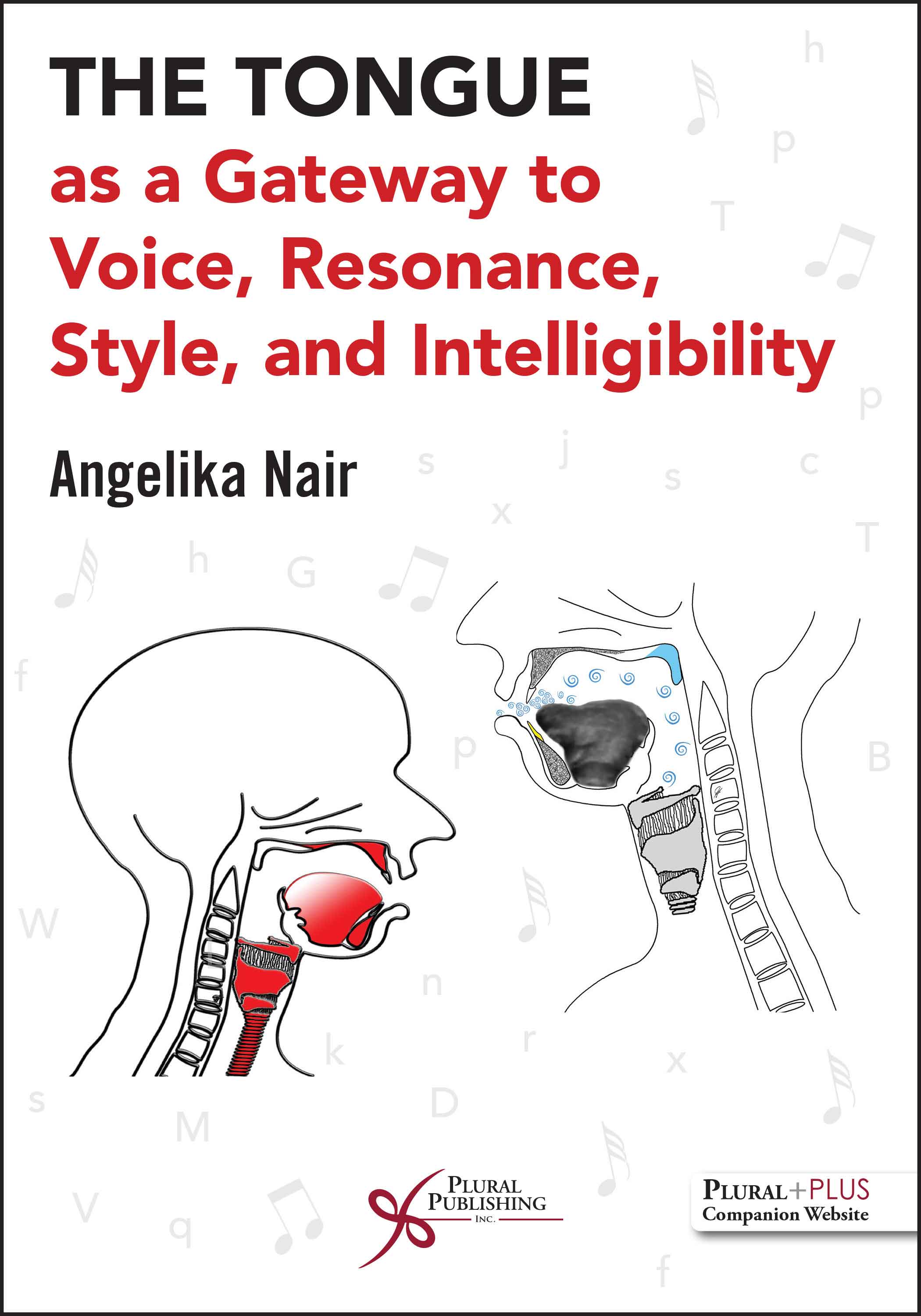
Mind-Body Awareness for Singers: Unleashing Optimal Performance
First Edition
Karen Leigh-Post
Details: 264 pages, B&W, Softcover, 8.5" x 11"
ISBN13: 978-1-59756-444-1
© 2014 | Available
For Instructors
Purchase
Includes Foreword by Shirlee Emmons
In Mind-Body Awareness for Singers, Dr. Leigh-Post broadens the scope of recent voice science texts by applying an insightful understanding of mindfulness, cognitive neuroscience and functional neural anatomy for the musician seeking to optimize one's performance in an ideal state--absent anxiety.
This book provides a fundamental understanding of functional anatomy and cognitive neuroscience to guide singers and teachers of singing to unlocking the mystery of the mind-body link involved in the complex audio-motor behavior that is singing. New theories and concepts, rooted in both the wisdom of masters in the field and current scientific research, are introduced from the unique perspective of the performer. Practical application exercises train the singer to work with, rather than against, the systems of singing to integrate the cognitive and conscious with the unconscious sensory and motor processes of our nervous system.
By mapping not only the body's musculoskeletal structure, but also the body's voluntary and involuntary behavioral responses, the vocal artist is empowered with an ability to maintain the following with ease:
- Optimal performance, characterized by elite execution, coordination, and self-correction.
- An ideal performance state, characterized by heightened awareness, vigilant attention, and autonomic balance/an absence of anxiety.
- Imagery or manipulation of a mental representation of a sensory event, characterized by an ability to express one's thoughts and feelings through an infinite supply of phenomenal images.
- Alignment.
Reviews
"In this ground-breaking volume, Leigh-Post demystifies the mind-body link by presenting clearly and understandably the science of how the conscious mind integrates with unconscious neural processes to produce the expressive and artistic endeavor we know as singing... .Mind-Body Awareness for Singers is a significant contribution to the field, a must-read for every singer and teacher of singing."
—Constance Chase, coauthor, Prescriptions for Choral Excellence (2006)
"In this new intriguing book...Leigh-Post nimbly weaves together discoveries in neuroscience with the experience of vocal artistry to show how singing can be viewed as a perception-action cycle."
—Raymond D. Kent, PhD, coauthor, Functional Anatomy of Speech, Language, and Hearing (1986)
"As an artist, performer and teacher, this book has opened my eyes to a new and exciting approach to singing."
—Harolyn Blackwell, soprano, Metropolitan Opera
"I highly recommend Mind-Body Awareness to singers as well as psychologists, physiologists, and other scientists who have an interest in the process of singing. Dr. Leigh-Post has done a superb job of condensing a large amount of research and literature to help us understand the processes whereby we produce vocal song and experience ourselves doing so. Her contemporary views and insights regarding the complex interactions that underlie the act of singing are complemented with her own helpful theoretical perspective."
—Timothy Petersik, PhD, contributing editor, ''Perceptual-Motor Skills"
"Mind-Body Awareness for Singers has come at an important time—The holistic field of cognition and bodily-kinesthetic awareness has taken a high place in contemporary research as we seek to understand the connection between the voice, ear (vestibular and cochlear), and brain—Dr. Leigh-Post's research and resources are impeccable and will stir your interest...."
—Marvin Keenze, Emeritus Professor of Voice and Pedagogy, Westminster Choir College, Princeton, NJ
List of Practical Application Exercises (PAEs)
Foreword
Introduction
Illustrated Guide to Neural Anatomy
Acknowledgments
Chapter 1. The Role of Cognition in Sensorimotor Processing for Optimal Performance
"I Think, Therefore I Sing!"
What Is Sensorimotor Processing?
Sensorimotor Processing Loop
Systems of Singing
Chapter 2. Sensory Information Processing: Perception of Our Environment and Ourselves
Transmission of Sensory Information
Perception
Attentional Focus and Receptivity
Integration Mechanisms: The Reticular Formation and Arousal (Awareness)
Heightened Awareness, or Mindfulness
Two-Way Transmission — “Top-Down” Processing From Upper-Level Controls
Selective and Executive Attention
Selective Attention and a “Happy Body”
Selective Attention and a “Smart Body”
Perception and Interpretation
Active Perception
Passive Perception
Active and Passive Memory and Association
Perception and Integration of Active and Passive Processes
Interpretation and Auditory Perception
Awareness, Novelty, and Constancy
"Brain Time" and Perceptual Awareness
Coping With Change: Novelty Versus Constancy
Summary
Perception of One’s Own Voice While Singing
Auditory Perception
Multimodal Perception
Somatic (Body) Senses
The Vestibular System (Sensory)
Purposeful Perception in Review
Chapter 3. Planning Voluntary Behavior
Introduction — Who Is In Charge?
Volition, Free Will, and Executive Ignorance
Research Trends in Voluntary Motor Behavior
Willed and Sensorimotor Intentions
What & When Planning — “What Are We Thinking?”
Summary
Learning and Memory
Anatomy of Learning and Memory
The Function of Memory and Higher-Level Perceptual Processing
The Working Memory
When Perception Turns to Planning — Images and Imagery
Defining Images and Imagery
Training the Singer’s Brain: Practical Application of Imagery for Developing Musical and Vocal-Motor Expertise
Summary
Chapter 4. Motor Output Processing
Introduction
Musculoskeletal Structures — General Anatomy and Function
Skeletal (Striated) Muscle Function
Axial, Proximal, and Distal Controls
Levels of Control
Lower-Level Controls
Muscle contraction, adaptation, and variability of force are reviewed from the perspective of the motor unit and sensory-guided movement.
The "stretch," "knee jerk," and "withdrawal" reflexes are reviewed with regard to voluntary adaptations for complex vocal-motor skills, such as the timing controls for reflex resonance associated with vocal vibrato.
Upper-Level Controls
A review of direct and indirect controls provided by the modulating influences of the basal ganglia and cerebellum, the brainstem, and cortical projections.
Developing Expertise
Postural and Respiratory Controls — “We’ve Got Your Back”
Reflexive Control Systems and Special Acts of Respiration
Postural and Respiratory Controls — Lower Torso, Neck, and Head
Summary
Chapter 5. Putting It All Together: Planning, Executing, and Monitoring a Rhythmically Entrained Performance
Rhythm and Rhythmic Entrainment
Predictability and Variability
Self-Organization of Forced and Spontaneous Entrainment
Summary
Practical Application — Putting It All Together With Rhythmic Entrainment
Simple Systems and Wide-Ranging Cohesion
Promoting Rhythmic Entrainment of Ongoing Sequences of Behavior
Rhythmic Entrainment and Training the Singer’s Brain
Concluding Comments
Glossary
References
Index

Cross-Training in the Voice Studio: A Balancing Act
First Edition
Norman Spivey, Mary Saunders Barton
Details: 151 pages, B&W, Softcover, 6" x 9"
ISBN13: 978-1-63550-037-0
© 2018 | Available

The Singing Teacher's Guide to Transgender Voices
First Edition
Liz Jackson Hearns, Brian Kremer
Details: 211 pages,B&W, Softcover, 7" x 10"
ISBN13: 978-1-63550-093-6
© 2018 | Available

The Evolving Singing Voice: Changes Across the Lifespan
First Edition
Karen Brunssen
Details: 331 pages, B&W, Softcover, 6" x 9"
ISBN13: 978-1-63550-043-1
© 2018 | Available

Vocal Technique: A Physiologic Approach
Second Edition
Jan Bickel
Details: 248 pages, B&W, Softcover, 8.5" x 11"
ISBN13: 978-1-94488-333-1
© 2017 | Available

Manual of Singing Voice Rehabilitation: A Practical Approach to Vocal Health and Wellness
First Edition
Leda Scearce
Details: 444 pages, B&W, Softcover, 7" x 10"
ISBN13: 978-1-59756-568-4
© 2016 | Available

What Every Singer Needs to Know About the Body
Fourth Edition
Melissa Malde, MaryJean Allen, Kurt-Alexander Zeller
Details: 312 pages, B&W, Softcover, 8.5" x 11"
ISBN13: 978-1-63550-261-9
© 2020 | Available

The Tongue as a Gateway to Voice, Resonance, Style, and Intelligibility
First Edition
Angelika Nair
Details: 278 pages, B&W, Softcover, 7" x 10"
ISBN13: 978-1-63550-363-0
© 2021 | Available

